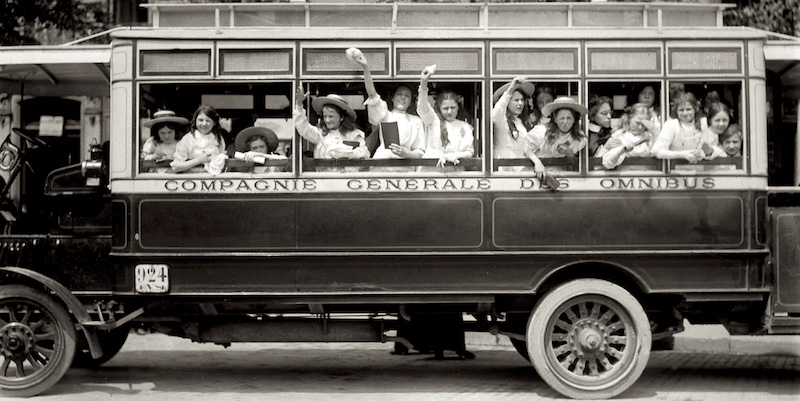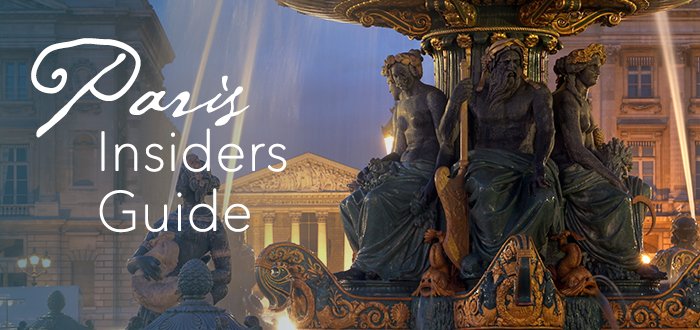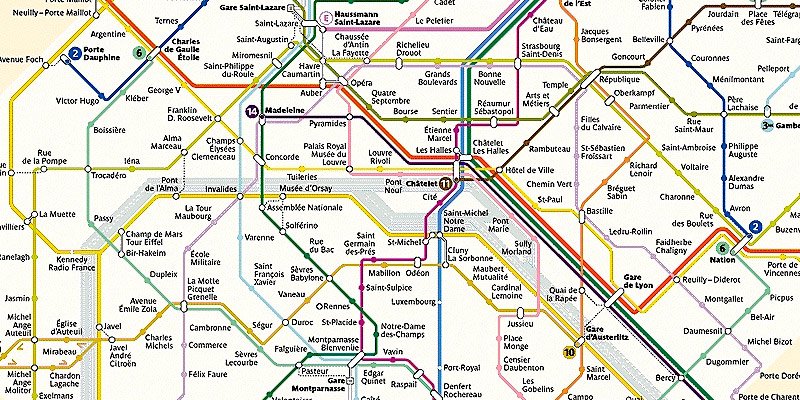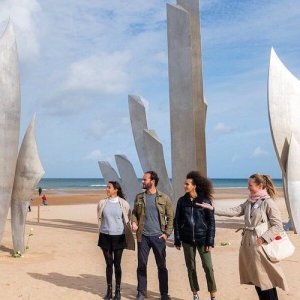The Fascinating History Of The Paris Bus System – 500 Years On The Move
The Fascinating History Of The Paris Bus System
Think of Paris urban transportation and your first thought is "Metro", but spend some time above ground and you'll discover that buses are one of the very best ways to see the city. Since we learned this Insider tip we travel by bus instead of the Metro whenever we can. In the making since 1464, the Paris bus system today carries three-hundred-million travellers annually. 300,000,002, counting us!
![]()
Discover What's On When You're Here...
• January... |
• February... |
• March... |
• April... |
• May... |
• June... |
• July... |
• August... |
• September... |
• October... |
• November... |
• December... |
Discover What's On When You're Here
• January...
|
• February... |
• March... |
|---|---|---|
• April... |
• May... |
• June... |
• July... |
• August... |
• September... |
• October... |
• November... |
• December... |
15th to 17th Centuries – The Royal Postal Service
 Horse-drawn fiacres on Boulevard Montmartre, painted by Pissarro in 1897
Horse-drawn fiacres on Boulevard Montmartre, painted by Pissarro in 1897
In 1464, Louis XI gold-stamped the first city-to-city public transportation system, cleverly named the Royal Postal Service to carry mail and travelers for a fee. Years later, Louis XIV (1638-1715) rolled out a public coach company with five routes; four of them passed through Jardin du Luxembourg while a circular route was named the Tour de Paris.
In 1645 Nicholas Sauvage, a coach builder from Amiens, set up a business in Paris renting out horses and carriages by the hour. He established his business near the Hôtel de Saint Fiacre (a tavern in the 3rd Arrondissement) and hired out four-seater carriages — which came to be called fiacres — at a rate of ten sous an hour.
Within twenty years Sauvage's idea had developed into the first citywide public transportation system. His eight-seater carriages, forerunners of the modern bus, were put into service in 1662. Eventually there were thirty-three fiacre stations around Paris where carriages could be found, similar to modern-day taxi stands.
![]()
Romantic Dinner Cruises In Paris
|
VIP Dinner Cruise with Bateaux Parisiens |
Dinner Cruise by Maxim's of Paris |
|
VIP Dinner Cruise with Bateaux Parisiens |
1828 – The Birth of the Paris Omnibus
 Paris omnibus, 1828
Paris omnibus, 1828
As the bourgeoisie class developed the need for transportation grew, especially for moving folks to the city from the surrounding areas. It was in Nantes, in 1826, that Stanislas Baudry started the first French omnibus service with large carriages that could carry sixteen passengers. Public response to the new service was so good that two years later Baudry brought his omnibuses to Paris, with coaches running between La Madeleine and Bastille.
Soon other entrepreneurs began to set up omnibus companies. The competition was fierce, especially on the lines to the busiest, most profitable areas. Within a short time there were more than one hundred omnibuses traversing Paris, in every quartier, day and night.
What Does Omnibus Mean?
Although the adjective omnibus doesn't have much to do with public transportation, the noun omnibus does — it means, simply, bus. The use of the word for public transportation originated in France in the 1820s to describe the large horse-drawn vehicles that carried people around Paris and Nantes. It's a Latin word that means "for all"; thus, transportation for all. It's also the word English speakers soon shortened to bus.
1855 – Baron Haussmann to the Rescue
 19th-century Paris omnibus, a forerunner of double-decker buses
19th-century Paris omnibus, a forerunner of double-decker buses
At the time of the Second Empire in France under Napoleon III the bus situation in Paris was unmanageable. Seventeen companies and nearly four hundred carriages traversed the city willy-nilly. In 1855, Baron Haussmann, prefect of the Seine and the urban planner who radically modernized Paris, stepped into this muddle to merge the transportation companies. The monopoly of the Paris omnibus transportation was entrusted to the Compagnie Générale des Omnibus (CGO). By 1856, the CGO had organized a network of twenty-five lines using 503 omnibuses and 6,700 horses.
![]()
Our Most Popular Day Trips from Paris
|
Spend a Day in the Champagne Region |
Visit the Historic D-Day Beaches |
|
Visit the Historic D-Day Beaches |
1905 – The Race to Replace the Horse
 CGO Omnibus, Paris c. 1910
CGO Omnibus, Paris c. 1910
In July 1905, CGO tested a steam-powered omnibus, but the test was unsuccessful. Later that same year, the first automobile show was held under the glass roof of the Grand Palais. There a competition was launched for automobile manufacturers to replace horse-drawn omnibuses. Nine prototypes were presented, with test runs on a special omnibus line from the Bourse (2nd Arrondissement) to the Grand Palais. After the show, the CGO ordered 151 of the Brillié P2 buses from the Schneider company.
1911 – The Platform Bus Becomes a Symbol of Paris
 Rear platform bus in Paris, 1950
Rear platform bus in Paris, 1950
The original omnibus designs were fine, but we know how much Parisians love a terrasse. Only a few years after becoming motorized, omnibuses began sporting rear, open-air platforms. The CGO chose another Schneider-produced bus, the PB2 type, which featured a wooden body, fitted with glazed frames and a new wonderful feature, a rear platform. This era also marked the end of animal traction; the last horse-drawn omnibus was withdrawn from service on January 12, 1913.
Readers of Georges Simenon's Maigret series will remember that Inspector Maigret prefers to hop on the back of a platform bus so he can smoke a pipe or two as he travels from police headquarters to a crime scene. The platforms were wildly popular among Parisians for decades.
![]()
Delicious Activities in the Marais
|
Marais Food & Wine Tour |
Cheese & Wine Tasting in a Paris Cellar |
|
Cheese & Wine Tasting in a Paris Cellar |
1914 – Women & The War Effort

On August 1, 1914, more than one thousand automobiles were requisitioned by the army to transport troops to the front lines of World War I. All the bus lines were canceled that same day, causing a major disruption. Despite the restrictions, the extensive tram network and ten Metro lines operated during the war — with the addition of 5,000 women drivers.
After the Great War ended, the gradual return of bus service also saw a strengthening of the network with new bus routes added to reach Opéra, Champs-Elysées, Palais Royal, and the Grands Boulevards.
World War II – Paris Struggles Under the Nazis
 Horse-drawn coaches on Pont de la Concorde during World War II
Horse-drawn coaches on Pont de la Concorde during World War II
During the Nazi occupation of France from 1940 to 1944, there were many shortages; the most important to the transportation sector was lack of fuel. In just a year, the number of automobiles in Paris dropped from 350,000 to under 4,500. Older modes of transportation, like the horse-drawn fiacre came back into favor.
The Metro system ran, but service was sporadic and the cars were often overcrowded. 3,500 Paris buses had been running in 1939, but only 500 were still in operation in 1940. The transportation problems did not end with the Liberation of Paris on August 25, 1944. In fact, gasoline shortages continued long after the war, and transportation suffered.
![]()
Our Most Popular Day Trips from Paris
|
Spend a Day in the Champagne Region |
Visit the Historic D-Day Beaches |
|
Visit the Historic D-Day Beaches |
The 1950s – New Lines for New Neighborhoods
 Place de la Opera in 1950 with a few buses and lot of cars
Place de la Opera in 1950 with a few buses and lot of cars
The fifties was a busy decade in Paris. Between 1950 and 1960 post-war reconstruction shifted into high gear with projects like new residential areas and the creation of the RATP (Régie Autonome des Transports Parisiens) — the Paris regional transportation authority. Forty-one new bus lines were added and most of the existing 190 lines were updated.
In 1957, as the automobile gained dominance, Paris and Île de France eliminated most of the tram networks. Dedicated enthusiasts rallied to save a few trams for future generations. They created the Association for the Museum of Urban, Interurban and Rural Transport that today operates a tramway museum in the town of Chelles.
The 1960s – The Automobile Boom Pushes the Bus to the Curb
 Running to catch the last bus?
Running to catch the last bus?
Between 1961 and 1970, as the automobile boom continued, the allure of the bus, omni or otherwise, diminished; ridership fell by nearly 40%. In fact, by the end of the 1960s, the transport ministry was actually considering abolishing bus service in Paris. Nonetheless, the RATP began to modernize, starting with the elimination of the platform buses. The last open-air, platform trip took place on January 22, 1971 on line 21 running between Gare Saint-Lazare and Porte de Gentilly. We like to imagine that Maigret was riding on it.
![]()
Skip the Lines at the Eiffel Tower
|
Eiffel Priority-Access Tours |
Eiffel Tower Tour to Level 2 or 3 |
|
Eiffel Priority-Access Tour |
1975 – La Carte Orange Is the only Jus We Need

By the seventies fare collection for public transit in Paris and the surrounding region was very complicated. For instance, if you wanted to travel across the city you had to buy up to five separate tickets! In 1975 a system-wide transportation card was introduced to simplify the system for riders. It was called la Carte Orange — the orange card.
Parisians took to it immediately, in droves. Within six months of its introduction there were 900,000 Carte Oranges in use. Riders were attracted to the idea of a public transportation system without the worry tickets or fares for each and every ride, even if it was, overall, a bit more expensive. Within five years of the card's introduction bus usage had risen by nearly 50%. In the 21st century the Carte Oranges was eventually phased out in favor of the chip-driven Navigo card that covers all transportation zones and all forms of public transit.
1983 – A New Twist to Paris Buses
 Articulated bus next to Metro bridge, photo by Henri Garat
Articulated bus next to Metro bridge, photo by Henri Garat
To meet the needs of increased ridership RATP began adding longer, articulated buses on certain routes. On May 1, 1983, the first of these models – the Renault PR180 – was put into service on lines 91 and 183. These spacious buses offered 150 seats (almost double a normal bus) and allowed a marked improvement in service on lines with heavy traffic. We love how these buses are open from one end to the other and the fact that you can enter and exit from any of their three doors.
![]()
Top-Rated Paris Museum Tours
|
The Louvre's Greatest Masterpieces |
Musé d'Orsay Guided Tour |
|
The Louvre's Greatest Masterpieces |
2000s – Paris Buses Begin Responding to Climate Change

Since the early years of the 21st century, public authorities in Paris have stepped up environmental actions with an objective to limit greenhouse gas emissions. In March 2014, RATP set an ambitious goal to phase out all diesel vehicles by 2025, replacing them with a fleet made up of electric buses and biogas buses.
2019 – You Say You Want a Revolution?
In April 2019, the RATP, which oversees public transportation in the Paris region, announced a major makeover to its bus network, the biggest change since it was created in 1950. More than two-thirds of the Paris bus system, forty-two lines in total, were updated, three lines were retired, and five new lines were created. The city of Paris calls the changes a "mini revolution".
Paris Planning Guides
 Glorious Dinner Cruises
Glorious Dinner Cruises |
 Top Left Bank Hotels
Top Left Bank Hotels |
 Visiting the Loire Valley
Visiting the Loire Valley |
 Skip the Tower Lines
Skip the Tower Lines |












